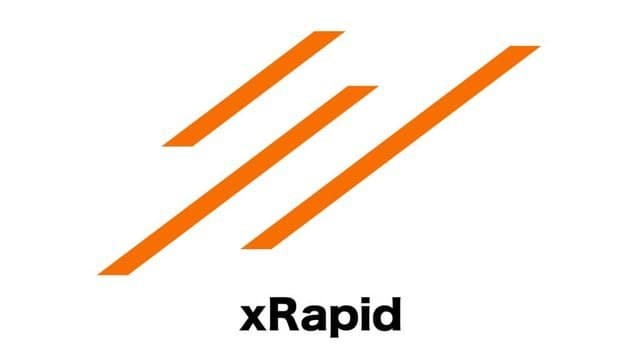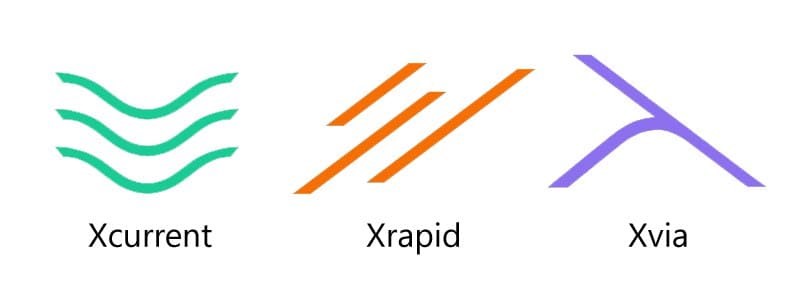The current business model used by Ripple is developing software and selling them on top of XRP (the native cryptocurrency used in Ripple’s network). There are three major software products that Ripple develops and they are xCurrent, xRapid and xVia. In this article, we are going to take an in depth look at each of these products and talk about how they are related to the company.
1. xCurrent (process payments)
.jpg)
xCurrent is an interbank communications and settlement software that was built around the ILP (Interledger Protocol). The ILP is an open source protocol that allows for interoperation between various ledgers and payments networks.
xCurrent is the software solution designed and produced by Ripple’s enterprise and allows banks and financial institutions to settle cross border transactions in an instant with end to end tracking. With the help of xCurrent, banks and financial institutions are able to message one another in real time in order to confirm the details of each payment before they initiate a transaction and validate it to confirm the delivery. xCurrent also includes a rulebook that was created in partnership with the committee of RippleNet. This makes sure that operational consistency and legal clarity is present in each transaction.
The solution, xCurrent, offers a cryptographically secure payment with end to end tracking along with immutability and redundancy of information. xCurrent was designed with the goal of complying with every bank’s privacy, risks and compliance requirements in mind. Since xCurrent was created with the aim of fitting inside the current infrastructure of a bank, it reduces business disruption and integration overhead to a minimum.
xCurrent consists of two main layers:
1. The first main layer is a communications protocol which can be utilized in order to perform such tasks as verifying payment details.
2. The second layer is the settlement layer. This layer makes sure that all the funds are legitimately committed on both ends and after verification, it releases the committed funds to the opposite side at the same time to ensure safe transactions and to remove scams.
xCurrent is able to increase the efficiency at which banks communicate with one another by leveraging distributed ledger technology which enables banks to facilitate transactions with faster pace, integrity and transparency (especially in multi currency exchanges). xCurrent is considered as Ripple’s most popular product among the people who use this protocol.
2. xRapid (source liquidity)

xRapid was designed to provide liquidity. This software solution enables companies to swap in and out of XRP in order to optimize transaction rate efficiency. In simple words, companies can use XRP in xRapid as some kind of a bridge currency in order to facilitate transactions. Without the said bridge, however, the spreads between infrequently exchanged currencies could be a lot higher which then leads to transactions becoming extremely expensive.
xRapid is made with the payment providers and other financial institutions in mind that wish to reduce liquidity costs while still improving their customer experience. The truth is, liquidity costs are often quite high because transactions need accounts from all over the world to be funded beforehand but xRapid is here to lower the amount of funds needed for liquidity by a huge amount.
xRapid is a great software without any doubt but it requires a certain asset in payment for the service it provides. This is why it utilizes XRP to offer liquidity on demand. As we have already stated, xRapid is able to lower the exchange costs drastically while allowing for real time payments to emerge in the markets. XRP was created for enterprise use and it offers payment providers such as banks and financial institutions a scalable, highly efficient and reliable option to achieve liquidity in order to provide payments across the world.
xVia (send payments)
.jpg)
This is the last product and the last stage in Ripple’s product ecosystem. xVia is in fact a payment interface in RippleNet – Ripple’s network consisting of various financial institutions that use xCurrent and xRapid to facilitate their transactions – which is designed and standardised for payment providers, corporations, banks and financial institutions that wish to send payments across multiple different networks with the help of a standard interface. xVia has a pretty simple API that does not need any type of software installation and is able to aid you in sending payments seamlessly across the globe with transparency into the payment status.
xVia has 3 main advantages that sells it:
1. Rich data transfer: thanks to the rich data which includes invoices attached to payments, you are able to improve the reconciliation process by a great amount.
2. Capital efficiency: with xVia, you can free up the funds that are sitting idle in a foreign currency exchange account with real time and on demand global payments.
3. Payments tracking: just like wallets, xVia has on demand delivery confirmations with tracking even in the networks that are not traditional.
Ripple’s rebranding

Recently, Ripple has changed up how these three software products work by a small amount. Instead of buying xCurrent or xVia, for instance, users will connect to RippleNet. This is important to know because people might think that Ripple has removed their three major products even though it is in fact just a simple rebranding. Ripple is moving towards building a full network rather than staying as a software suite. This is why Ripple combined all their main products in one unified network.
The Final Takeaway
By combining all three of Ripple’s products, the company is able to provide a truly unique crypto banking experience to its users, tackling the main problems that are criticized in traditional banking in the current time and that is high resource inefficiencies and high transaction fees.
Ripple’s Network
Process Payments
Interledger Protocol
Communications Protocol
Source Liquidity
Send Payments
Graphic Photo World
Frontend Free Code
Code Free Tutorial
CSS Free Code
PHP Free Code



 Home
Home How to use
How to use Sitemap
Sitemap About Us
About Us Suggested
Suggested Privacy Policy
Privacy Policy